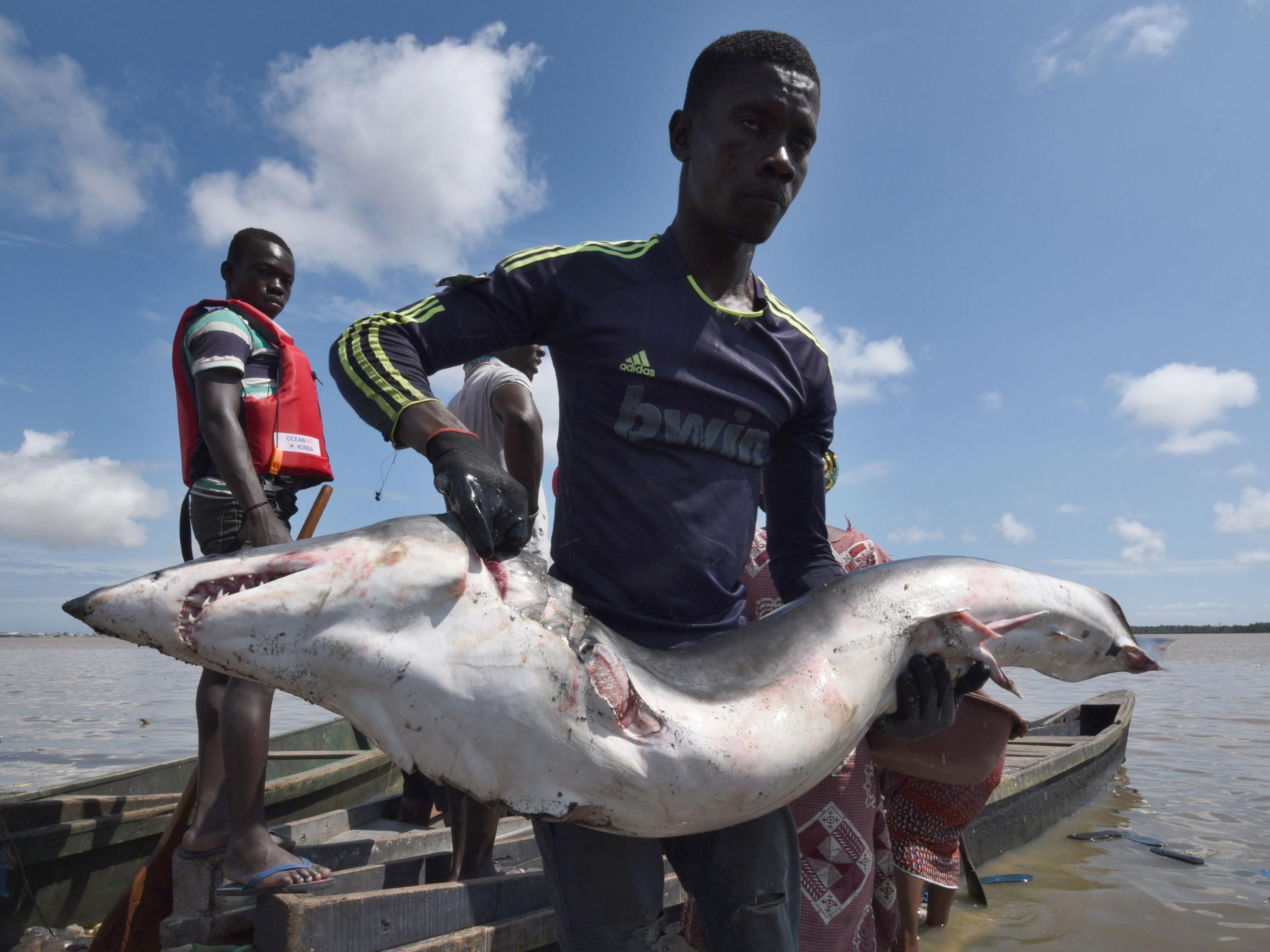A quarter of shark species are under threat, experts warn
Conservationists want the marine predators to be given more protection

One in four species of shark are seriously threatened by unregulated commercial fishing and the trade in shark parts for human consumption, experts have warned.
The top predators are in dire need of protection, according to conservationists, who say the fact 100 million sharks are killed every year poses a threat to the survival of some species.
The status of four types of shark is to be voted on at the Convention on International Trade in Endangered Species (CITES) conference, which is under way in Johannesburg, South Africa.
Delegates are expected to decide whether to increase protection for the silky shark and three species of thresher shark on Sunday.
A yes vote would mean the sharks were protected under the CITES appendix II, which bans all trade in parts except under stringent conditions.
A coalition of conservation organisations which is working to secure the listing also wants to see several types of devil ray, a sister species to sharks, protected.
The group tweeted that they are calling for “science-based limits on catch and exports” to ensure sustainability.
They said shark and ray species were currently being traded “at levels that far exceed what can be sustainably sourced”.
Sharks are slow-growing and slow to reproduce, leaving them particularly vulnerable to overfishing. There is a large market for their fins, which are eaten as a delicacy in some Asian countries.
Shark meat, skin, liver oil and cartilage can also be sold for human consumption, and the animals are often accidentally caught by industrial longline fishing.
Meanwhile, conservation groups say mobula rays are an easy target for fishermen because they are “slow-moving ... and often predictable”.
Ray gill plates are used in traditional Chinese medicine, making them a valuable commodity.
Andy Cornish, an expert on sharks and rays at conservation group WWF, said the demand for fins, meat and gill plates in particular “is higher than ever”.
“Many countries have no management whatsoever for sharks – anybody can take whatever they want,” he told Agence France-Presse (AFP).
“Even in some countries that have regulations, they are not well enforced, and as a result, 25 per cent of sharks and rays and their relatives are threatened with extinction.”
Fiji, Sri Lanka and the Maldives, which rely on marine life for tourism, are leading proposals to have 13 threatened species of shark and rays given stronger CITES protection. South Africa is also expected to vote in favour of increased protection.
“Sharks are a vital ecological part of the ocean fabric and rays are keystone species, so we need to protect them,” Dan Ashe, director of the US Fish and Wildlife Services, told AFP.
“Silky sharks, thresher sharks and the devil rays are being unsustainably harvested.”
According to the Wildlife Conservation Society (WCS), sales of shark and ray meat rose 40 per cent in the decade to 2011.
“The global trade in shark and ray parts and products is nearing $1 billion in annual value,” said Amie Brautigan, a WCS expert on sharks and rays.
Basking sharks and whale sharks were the first sharks given protection under CITES appendix II in 2003. All manta rays and some other shark species were added at the last CITES meeting in 2013.
At this conference, sharks have an unlikely advocate in South African paralympic swimmer and shark attack survivor Achmat Hassiem.
Ten years ago, Mr Hassiem, a lifeguard, lost half his leg when a great white shark attacked him in the sea off Cape Town.
“I think movies that portray sharks as man-eating monsters do a huge disservice to sharks,” the 34-year-old told AFP.
“As top predators in the oceans, they play a crucial role in the food chain. Without them, there is an imbalance that funnels right down to the coral.”
A vote in favour of protected status would add the new shark and ray species to a list of 21,000 animals already protected under CITES appendix II. Countries then would be forced to regulate shark fishing and issue export permits for shark parts.
Join our commenting forum
Join thought-provoking conversations, follow other Independent readers and see their replies
Comments
Bookmark popover
Removed from bookmarks